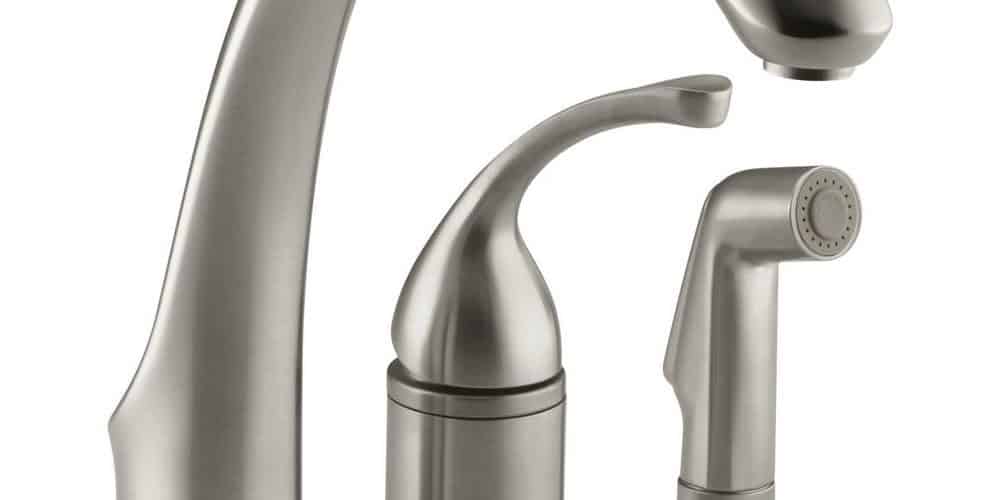There are several concerns to address when choosing any kind of kitchen faucet. If a single handle faucet appeals to you, you must consider the pros and cons. Presently. a single handle faucet is the quickest, cheapest kitchen upgrade. The one lever style is great for users whose manual dexterity is diminished. One lever controls water temperature and water flow. This style cuts down on the number of holes that must be carved out of a countertop.
ALERT! ALERT! Choose a faucet that is compatible with the existing countertop and under sink pipes. If considering a wall mounted faucet, you’ll need entirely different plumbling requirements. If re-doing a kitchen, purchase the faucet and sink at the same time to avoid costly mistakes. Pick a faucet with sufficient reach. Pick one that does not dwarf the sink. One con could be a faucet’s durability or lack of. Only pick top quality single lever faucets. Shop around. Not all require a whole paycheck. Choose one that can endure daily use. It must be extremely durable because that handle will take a lot of abuse. You may baby it but not everyone else in the house will treat it with care. How heavy-handed are others in the household? Some add-ons like pull-down sprayers and spout designs are possible. Re-think these choices if rough hands will be using them.
Single handle kitchen faucets come in a variety of protective finishes and colors. They include, but are not limited to, hand-rubbed bronze, chrome, stainless steel and brushed nickel. If you want your faucet to match your cabinets or countertop, it most likely will be plastic. Again, think durability. There is nothing wrong with plastic. Its life is a little shorter but it works. Would it hold up to your purposes? Sometimes a faucet’s housing is plastic; sometimes its inner workings are plastic. You must find out the faucet’s composition if the information would inform your decision. Call the manufacturer. Ask the dealer.
The hardest part of picking a faucet involves discovering its construction and the valve type it uses to regulate water flow. These factors reveal how well the faucet will operate and how long it will last. Stainless steel varieties are almost indestructible and basically are resistant to corrosion. Stainless steel goes with all kitchen decor. Plastic works but nowhere near as well as metals. Tubular brass and cast brass round out the construction definition. The cast brass is sturdier and very thick. All brass needs to be protectively coated.
The section of a faucet which will fail first from wear is the valve. The four types of valve systems are: cartridge, compression, ball and ceramic disks. Each valve system’s construction and durability level determines when you’ll need to get it fixed or replaced. Cartridge valve faucets use a plastic and brass cartridge. They are less complicated than ball valves and easier to fix. They fail much less than compression valves. The most classic of the valves is the compression valve. They have handles or knobs for hot and cold water. Water control is maintained by twisting a screw-like knob that squeezes the valve against a rubber washer. A dripping faucet signals a worn out valve. They are easy to repair compared to the others. Most single handle kitchen pull out faucets use ball valves. The slotted cage which holds the ball valve measures and blends hot and cold water by using the many actions of the lever. Washerless, they are still complicated because of all the additional parts. Last, but not least, are ceramic disks valves. They have the longest life and are the most pricey. The action of two disks slipping over each other regulates the flowing of water through holes in the disks.
Related Posts
- How To Fix A Leaky Bathtub Faucet?
- How To Repair A Faucet?
- How To Repair Leaky Faucet?
- How To Fix a Leaky Faucet?
<>







